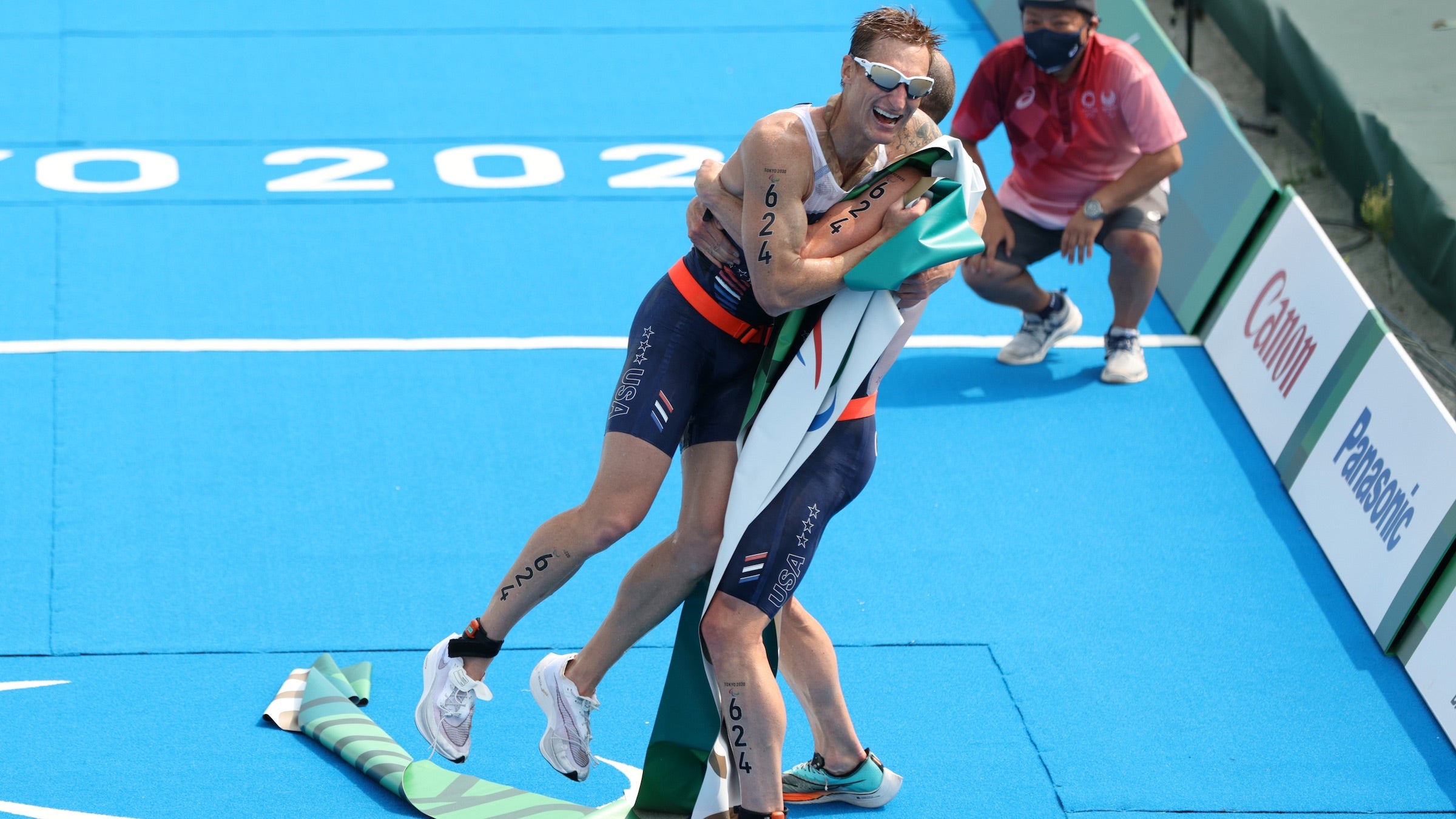Brad Snyder Wins 6th Paralympic Gold, 1st in Triathlon

Brad Snyder and his guide, Greg Billington, celebrate. (Photo: Photo by Adam Pretty/Getty Images)
After making the switch from swimming to triathlon in 2018, American Brad Snyder could have been considered an underdog going into the Tokyo Paralympics triathlon race—but, instead, he led from the start and never gave up the front position.
The former swimmer at the U.S. Naval Academy lost his sight during an IED explosion while serving in Afghanistan in 2011. During his recovery, he got back in the pool and was soon winning Paralympic medals in swimming. He won two golds and one silver in London in the 100m, 400m, and 50m free, and then three more golds and a silver in Rio, adding the 100m backstroke. He also set a Paralympic 100m freestyle record in Rio, swimming 57.16.
It was, then, that he decided needed a new challenge.
“Triathlon gave me that in spades. I was not that good when we started. I was not that good eight weeks ago,” he said afterwards. But he worked hard on his biking and running during the last year, and on the transitions, “doing the work it takes to get incrementally better day after day,” he said.
He also called out the help of his guide, 2016 Olympian Greg Billington, who “really pushed us through massive improvement the last six weeks.”
Snyder made the switch to paratri in 2018. After placing on the podium at a handful of World Series events in 2019, he made drastic improvements during this extra pandemic year.
In Tokyo, the visually impaired athletes raced a sprint distance on the same course where the Olympics were held last month with a 750m swim, 20K bike, and 5K run. They must race with a guide, who directs them throughout the race, rides a tandem with them, and is connected with a tether on the swim and run. With the increased competitiveness in the paratriathlon races, many athletes are having to turn to faster and faster guides. Billington was not the only Olympian serving as a guide in the race; Andy Potts also guided first-time Paralympian Kyle Coon to a fifth-place finish.
“I did not think I’d be here,” said Billington, who retired from triathlon after the 2016 Olympics. The duo thanked each other and their teams watching at home. “Super grateful to everyone who gave me another chance to represent the USA.”
The PTVI athletes also race with a head start system, where the fully blind athletes started a little over three minutes ahead of the partially blind athletes—a lead Snyder then had to hold onto.
After 10:35 750-meter swim, he said he had the best transitions and bike of his life to navigate a flat and turn-heavy course and enter T2 with a 1:40 lead. Snyder then ran a 19:31 to hold off a fast-closing Hector Catala from Spain, and won by just under a minute.
“It’s been a long road with a lot of hurdles, all the athletes here have been through a lot,” he said, but when you cross the line in first with a near-perfect day “it’s all worth it.”